Grand Canyon National Park: A First Time Visitor Guide
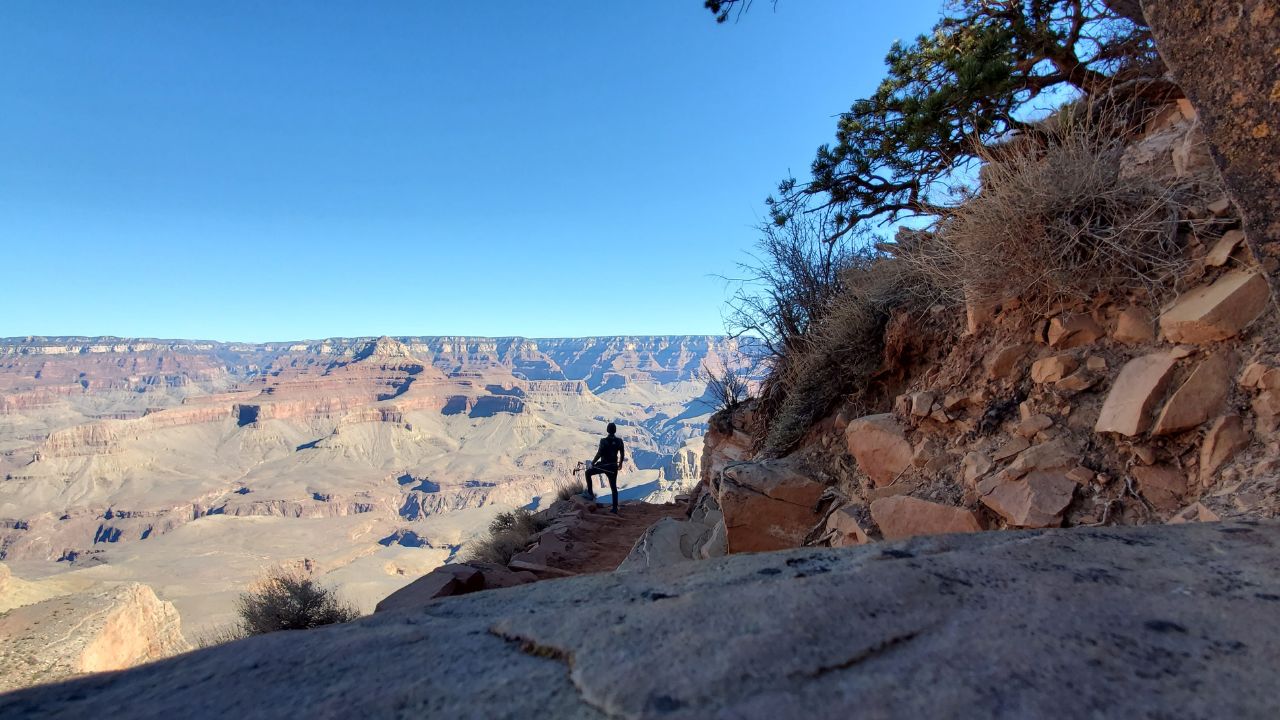
Grand Canyon National Park is not only a top 5 national park that people from all over the world come to visit every year, but it is also one of the Seven Natural Wonders of the World and to describe it as breathtaking is an understatement. The Grand Canyon spans 277 miles and reaches depths of over a mile. There are many ways to explore it and in this post, you’ll learn about the most common options depending on what type of trip you’re taking to this amazing place.
Basic info:
- Name: Grand Canyon National Park
- Location: Arizona
- Fee: $35 per car
- Things to do: Hiking, sightseeing, stargazing and much more
Overview:
The park is divided into two main rims: the South Rim and the North Rim, each offering unique perspectives and experiences. The South Rim is open year-round and is more accessible and recommended for first time visitors.
The North Rim is open seasonally (mid-May to mid-October) and offers a quieter, more rugged experience. There are also more remote ways to enter the Grand Canyon from the east and west ends, but those typically require permits, an 4WD vehicle and other advanced preparations.
Getting There:
The South Rim is the most visited area and easiest to access. The North Rim is more remote, but worth the trip for those seeking solitude.
Nearest Airports:
- Flagstaff Pulliam Airport (FLG): About 1.5 hours from the South Rim (check flights)
- Phoenix Sky Harbor International Airport (PHX): About 3.5 hours from the South Rim (check flights)
- Las Vegas McCarran International Airport (LAS): About 4.5 hours from the South Rim (check flights)
Driving Directions:
- From Flagstaff: Take US-180 North to AZ-64 West for the South Rim. For the North Rim, it’s a 5-hour drive.
- From Las Vegas: Drive via I-40 East to AZ-64 North.
Photos:
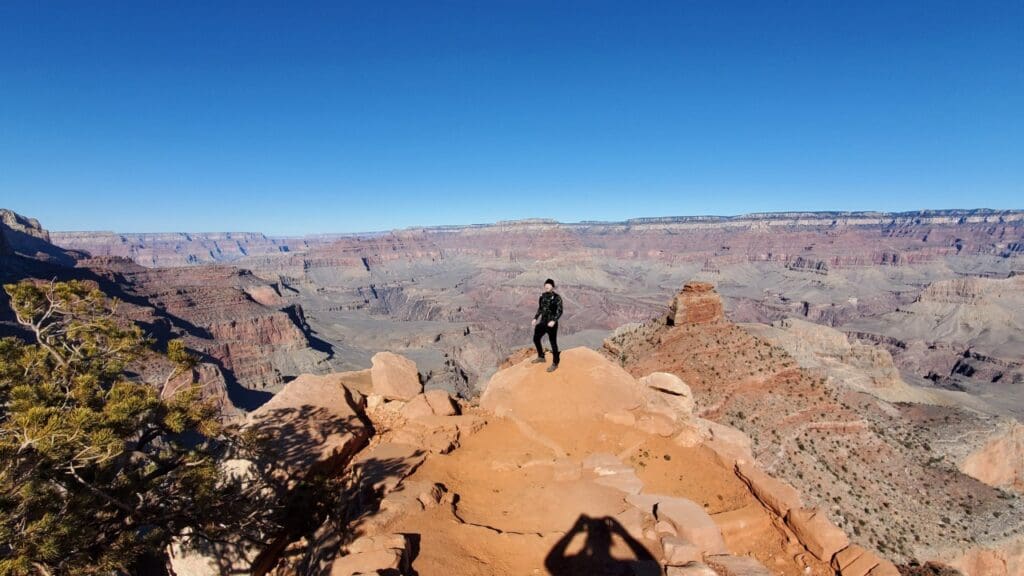
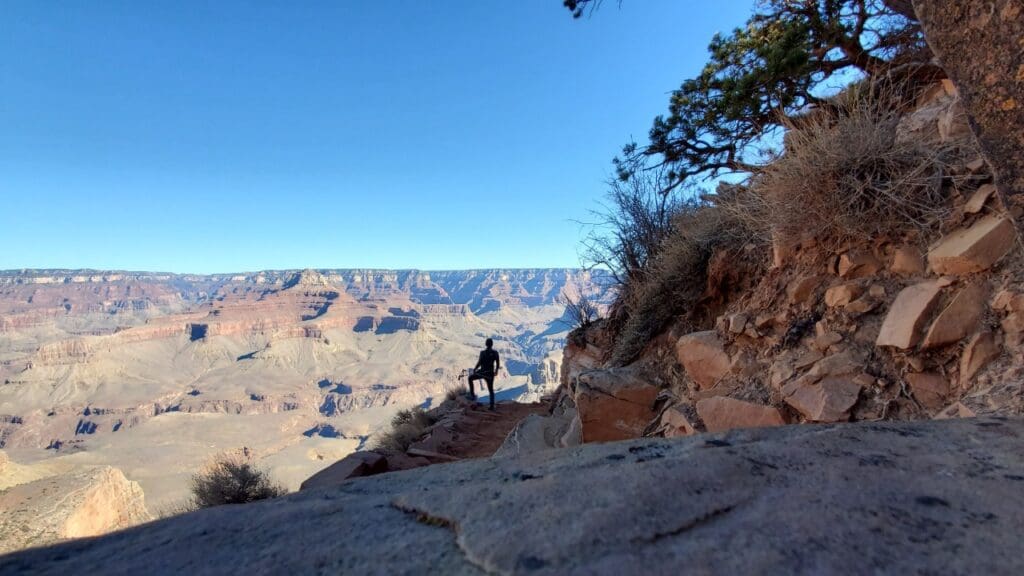
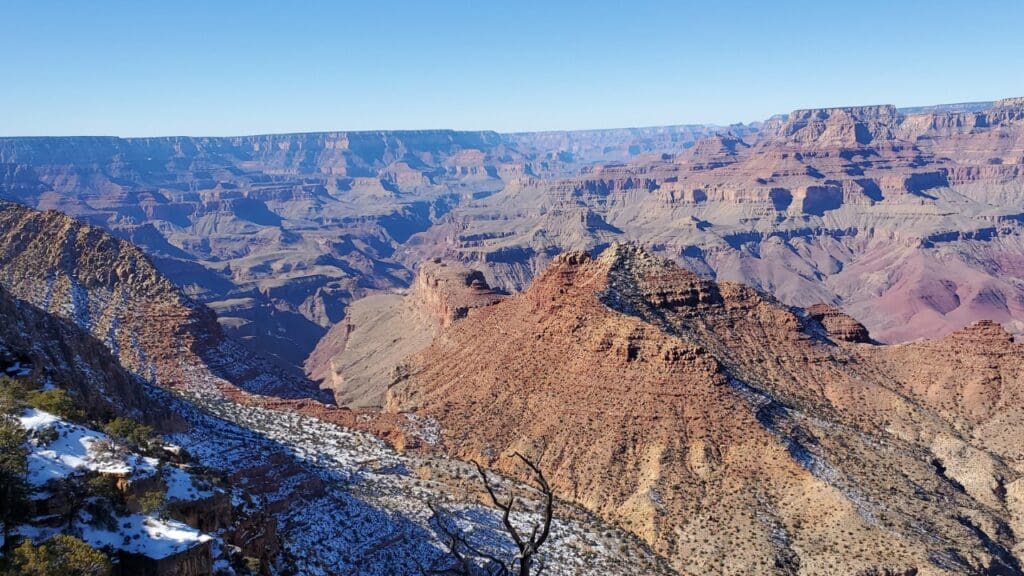
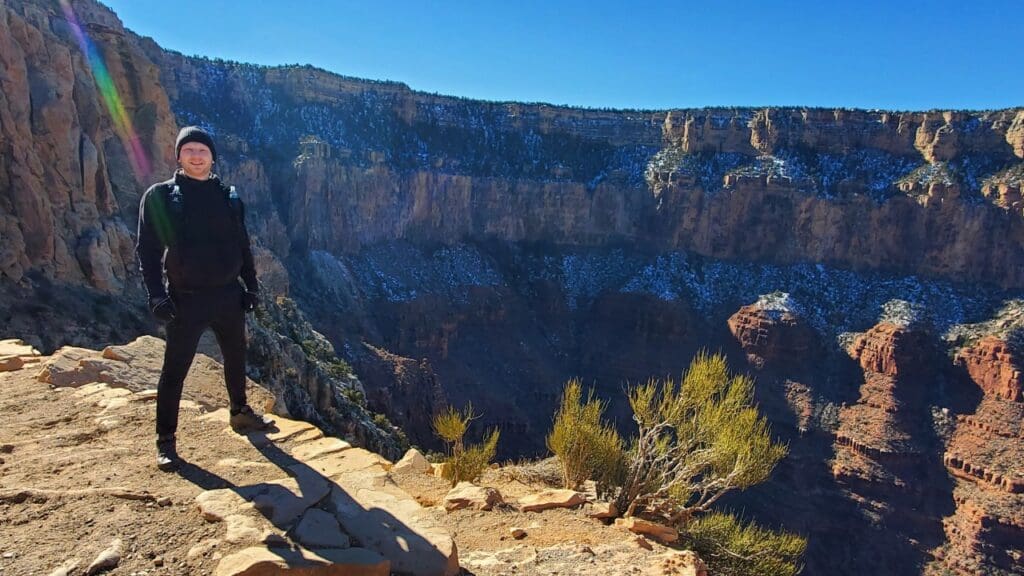
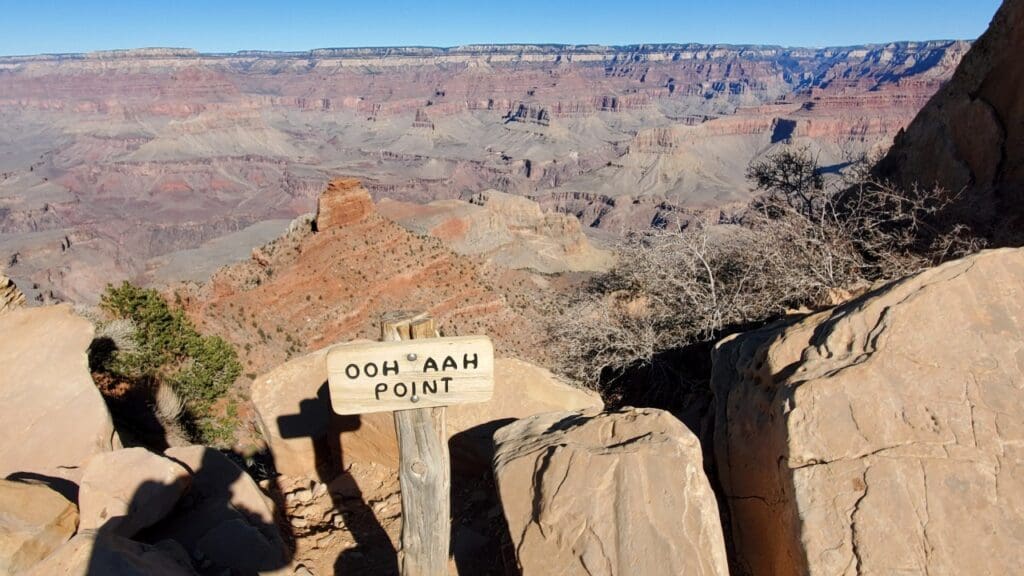
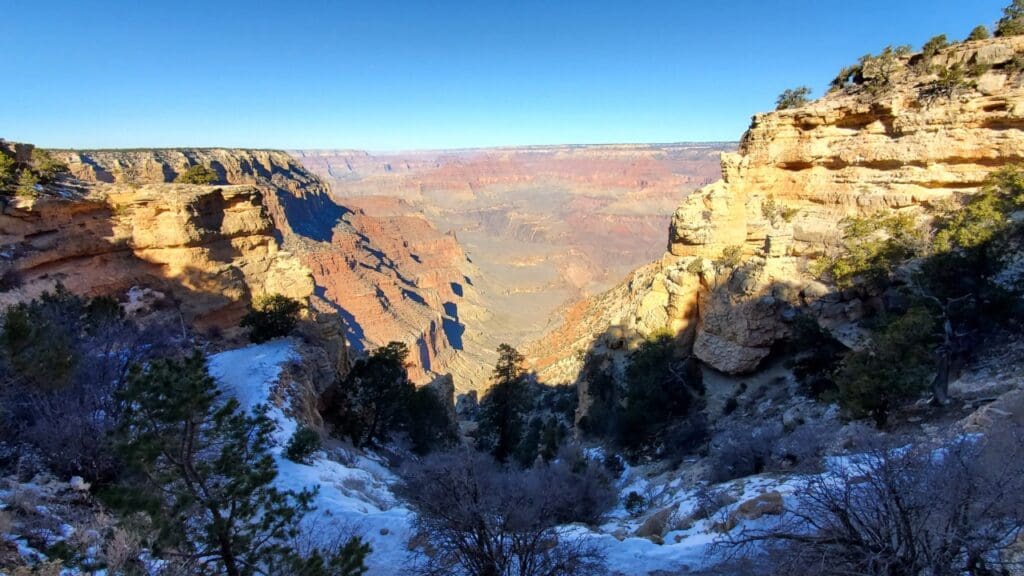
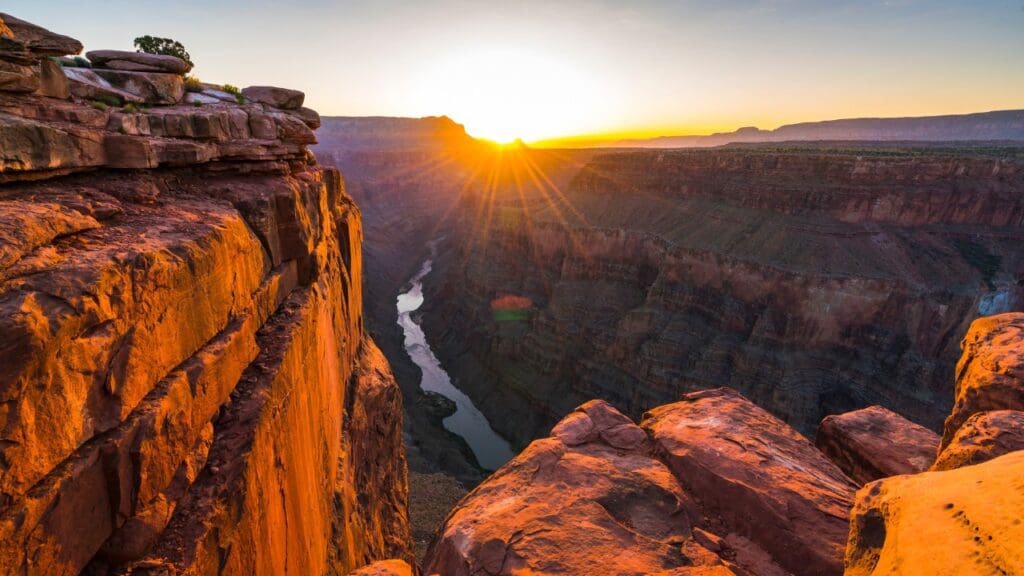
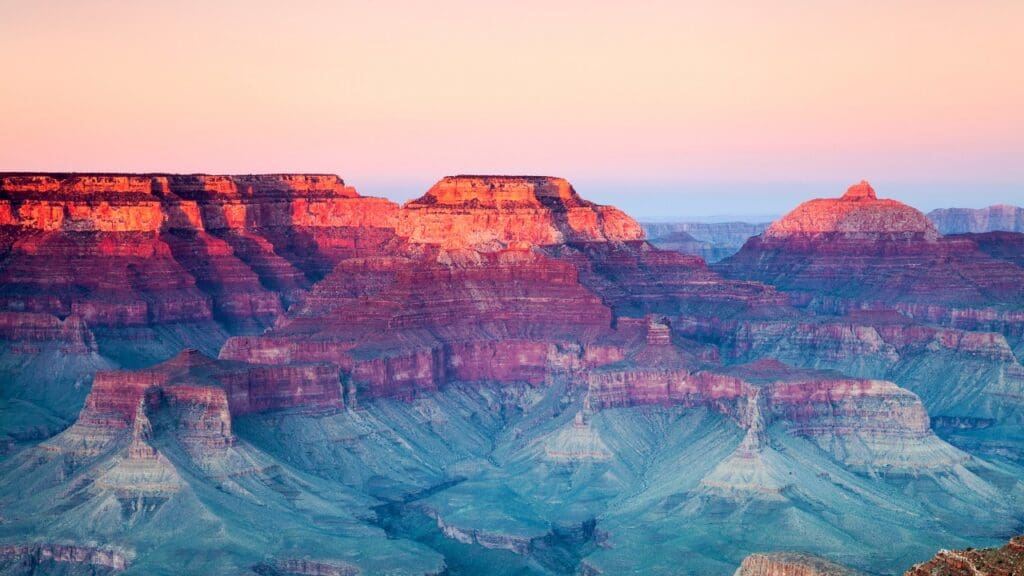
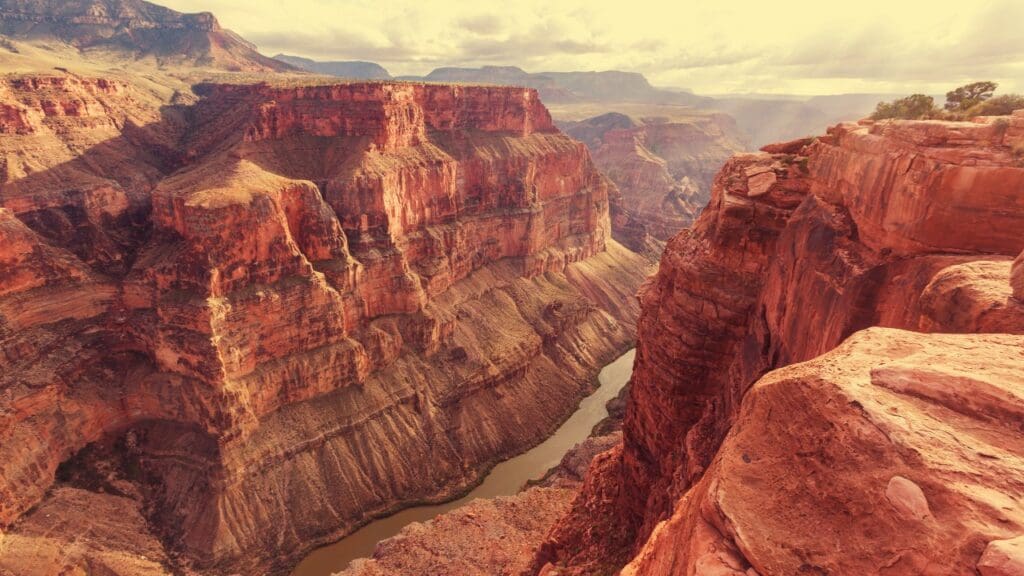
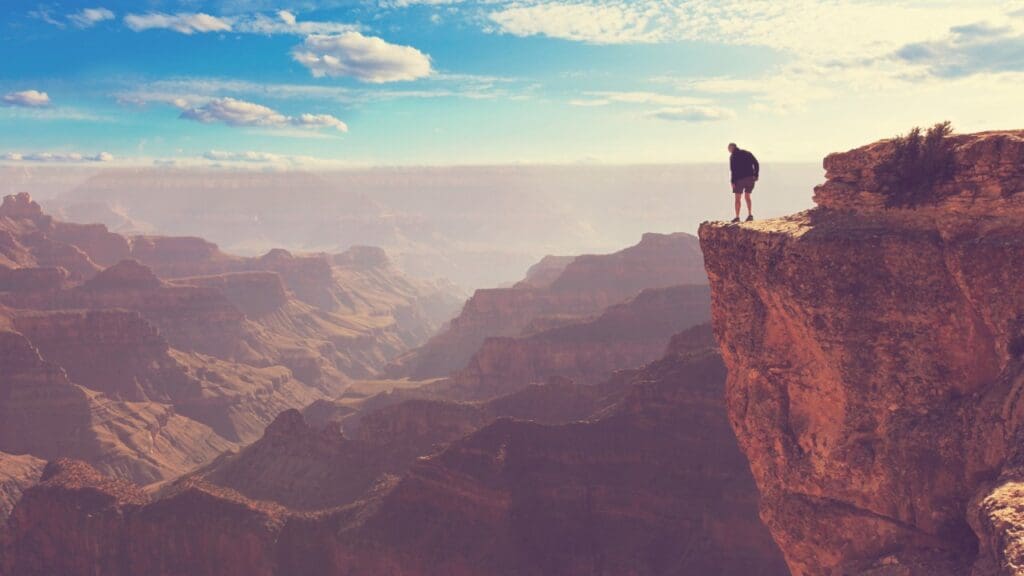
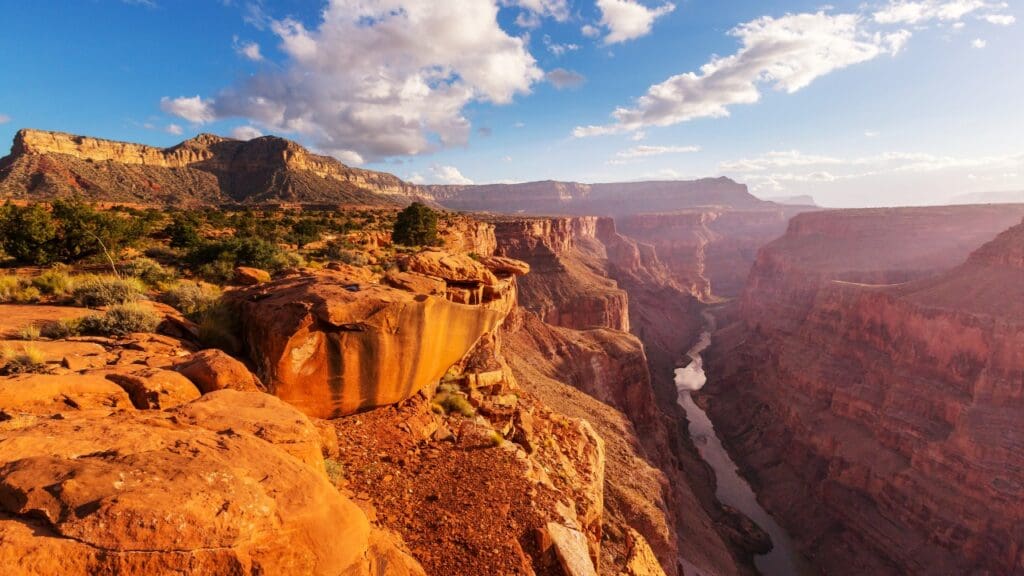
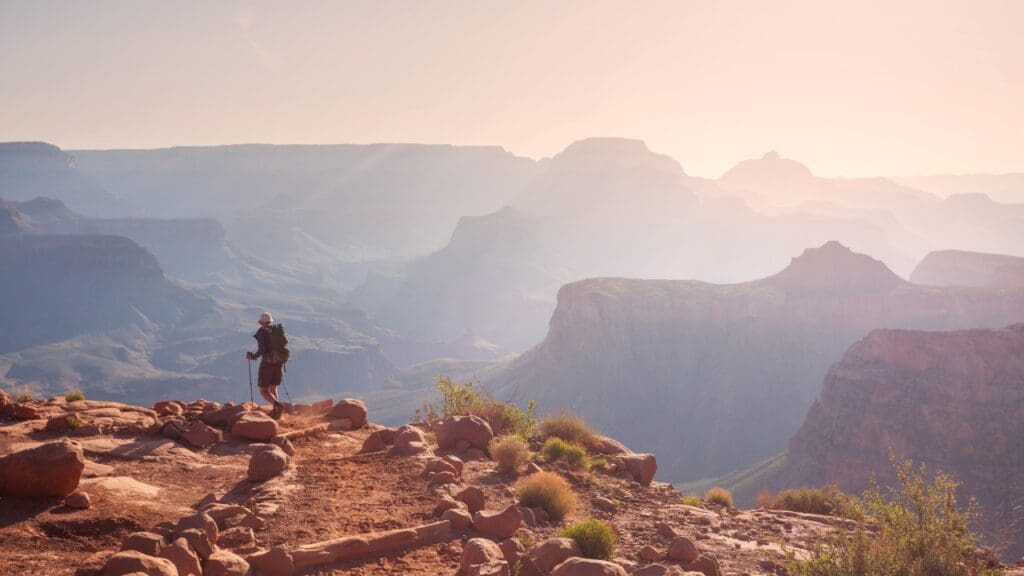
Best Times to Visit:
While the Grand Canyon is a year round destination, each season has it’s own benefits when it comes to visiting and here is a breakdown of each:
- Spring (March to May): Pleasant temperatures and blooming wildflowers. Ideal for hiking and photography.
- Summer (June to August): The busiest time, with warm temperatures and ranger programs. Early mornings or evenings are best for exploring.
- Fall (September to November): Cooler temperatures and fewer crowds make this a great time to visit. This is my personal preference.
- Winter (December to February): Snow blankets the canyon, creating a serene atmosphere. Ideal for South Rim visits, as the North Rim is closed.
Top Attractions:
Each area of the Grand Canyon offers iconic sights and unique experiences.
South Rim Highlights:
- Mather Point: The classic Grand Canyon viewpoint, located near the Visitor Center.
- Bright Angel Trail: A popular trail that descends into the canyon. Hike as far as you’re comfortable and remember the return trip is uphill.
- Desert View Watchtower: A historic structure offering panoramic views of the canyon and the Painted Desert.
- Hermit Road: A scenic drive with several overlooks, accessible via shuttle in peak season.
- Top visitor recommendations
North Rim Highlights:
- Bright Angel Point: A short trail leading to stunning views of the inner canyon.
- Cape Royal: Known for its sunrise and sunset views, this overlook offers a unique perspective of the Colorado River.
- Point Imperial: The highest point on the North Rim, providing incredible vistas of the canyon.
- Top visitor recommendations
Colorado River: Experience the canyon from below with a rafting trip along the river. Both single-day and multi-day trips are available. See options.
Hiking and Outdoor Activities:
South Rim Trails:
- Rim Trail: A relatively flat trail with stunning views, stretching 13 miles along the South Rim.
- South Kaibab Trail: Descend into the canyon for dramatic vistas. Popular turnaround points include Ooh Aah Point and Cedar Ridge. The South Kaibab trail is one of the most popular in this area.
- Bright Angel Trail: A well-maintained trail with rest stops, ideal for those looking to venture deeper into the canyon.
North Rim Trails:
- Transept Trail: A moderate 3-mile round trip with beautiful views of Bright Angel Canyon.
- North Kaibab Trail: The only trail into the canyon from the North Rim, leading to the Colorado River.
Connecting trails: There are also trails which connect to the South Rim, giving people the option to do what is known as the Rim to Rim Trail from the South to North end (or vice versa).
Other Activities:
- Mule Rides: A unique way to explore the canyon, available at both rims.
- Rafting: Multi-day rafting trips offer a thrilling way to experience the Colorado River.
- Stargazing: The Grand Canyon is a designated Dark Sky Park, making it a top destination for stargazing.
Grand Canyon Packing List
You can get a majority of the following things on my Amazon gear list but here’s an overview:
Essentials:
-
Daypack or hydration pack
-
Reusable water bottles or hydration bladder (at least 3L)
-
High-energy snacks (trail mix, protein bars, jerky)
-
Map or offline trail app (like AllTrails or Gaia GPS)
-
Permits (if hiking below the rim or overnight)
Clothing:
-
Moisture-wicking base layers
-
Lightweight long-sleeve shirt (for sun protection)
-
Breathable hiking pants or shorts
-
Warm layer (it can get chilly in mornings/evenings)
-
Rain jacket or windbreaker
-
Wide-brim hat or cap
-
Sunglasses with UV protection
-
Sturdy hiking boots or trail shoes
-
Wool or synthetic socks (bring an extra pair)
Sun & Safety:
-
Sunscreen (SPF 30+)
-
Lip balm with SPF
-
First aid kit
-
Headlamp or flashlight (with extra batteries)
-
Emergency whistle
-
Personal ID and health insurance card
-
Trekking poles (optional but helpful on steep trails)
Extras:
-
Camera or smartphone
-
Binoculars (for spotting wildlife or looking across the canyon)
-
Journal or notebook
-
Lightweight blanket or towel (for scenic rest spots)
Wildlife and Nature:
The Grand Canyon is home to diverse flora and fauna, adapted to its unique environment.
Wildlife:
- Elk and Mule Deer: Commonly seen near the South Rim.
- California Condors: A rare and endangered bird, often spotted soaring above the canyon.
- Coyotes and Gray Foxes: Active in the evenings.
Plants:
- Pinyon Pines and Junipers: Common along the rim.
- Cacti and Desert Wildflowers: Found within the canyon.
Where to Stay:
Camping:
- Mather Campground: Located near the South Rim Visitor Center.
- North Rim Campground: Open seasonally, offering a peaceful camping experience.
Best Grand Canyon Sunset Spots:
South Rim
- Mather Point
- Hopi Point
- Yaki Point
- Desert View Watchtower
- Mohave Point
- Lipan Point
North Rim
- Bright Angel Point
- Cape Royal
- Point Imperial
- Roaring Springs Overlook
- Walhalla Overlook
Tips for Visitors:
- Plan Ahead: Book lodging, tours, and activities well in advance, especially during peak season (check hotel options).
- Start Early: Beat the crowds and enjoy cooler temperatures by visiting popular spots in the morning.
- Pack Essentials: Bring water, sunscreen, sturdy footwear, and a hat for sun protection.
- Stay on Trails: The canyon’s edges can be unstable. Always follow designated paths and respect safety signs.
- Use the Shuttle System: Free shuttle buses operate at the South Rim, reducing traffic and making it easy to visit key attractions.
Nearby Attractions:
Final Things to Know:
Grand Canyon National Park is a natural wonder that captivates visitors with its immense scale, vibrant geology, and endless opportunities for exploration. Whether you’re hiking its trails, gazing into its depths from a scenic overlook, or marveling at the stars above, your first visit to the Grand Canyon will undoubtedly be an unforgettable experience. With a little planning and a sense of adventure, you’re sure to create memories that will last a lifetime.
